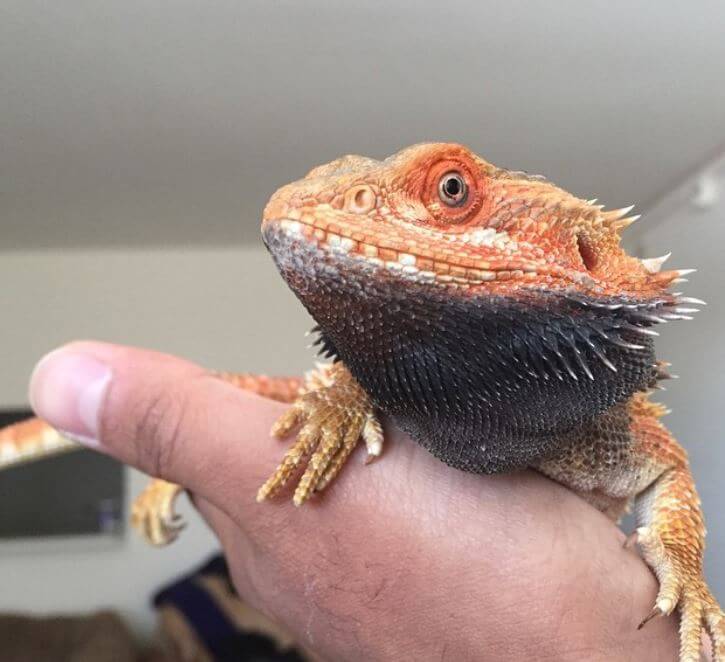Suppose many people are still wondering what is better between a fancy bearded dragon VS bearded dragon.
In that case, lots of knowledgeable pet keepers can quickly get one. The reason is that they have been armed with necessary sources of related information.
Maybe you have ever heard about them but didn’t care much. Now, it’s your turn to discover interesting information about this matter.
Hopefully, they will be helpful regarding your final decision.
Related Posts:
- Can Beardies Eat Honeydew Melon?
- Can Beardies Eat Rosemary?
- How Often to Trim Beardie Nails? A Detailed Guide
- Beardie vs. Horned Toad: Facts and Differences
- Can Beardies Get High?
- Why Does My Beardie Stare at Me?
- Types of Bearded Dragon Morphs
What Is a Fancy Bearded Dragon?
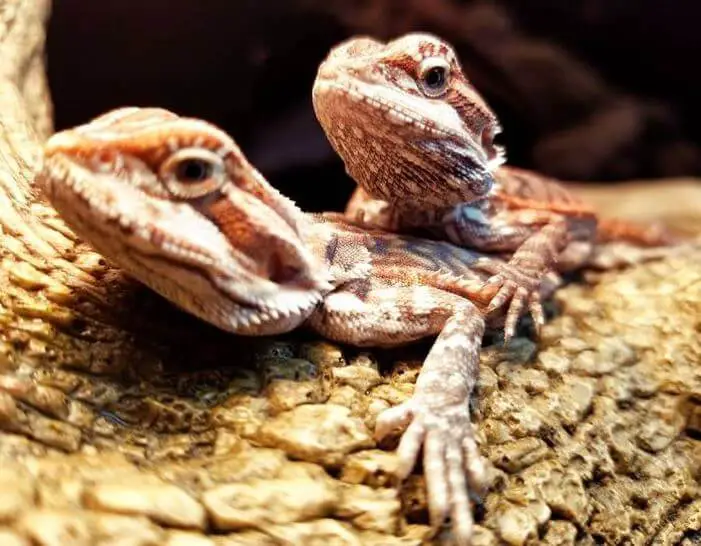
Generally, a fancy bearded dragon is selectively bred to look different from wild bearded dragons.
They are kind of related to purebred dogs and cats. Breeders often make a lot of attempts to track their lineage and cultivate their appearance.
They may feature a lot of characteristics refined over various generations. Besides, they may hold genetic morphs that appeared unexpectedly in clutch/wild-caught ones.
These even have a combination of morphs and traits that may catch your attention.
How Did the Fancy Bearded Dragon Breeding Start?
Interestingly, bearded dragons originated in the deserts of inland Australia.
However, according to Reptile Maniac, a fossil discovered in 2006 indicated that bearded dragons may have existed in India over 220 million years ago!
Although it’s possible that bearded dragons have been around for millions of years, it wasn’t until the mid-1990s that they became popular among reptile enthusiasts.
Over the next decade, bearded dragons quickly became one of the most popular pets in the United States.
Due to the huge demand for bearded dragons, many reptile breeders started breeding them to create these extravagant colors and patterns, otherwise known as fancy bearded dragons.
Additionally, specific physical genetic traits have been bred into bearded dragons over the course of many years.
Some of these bearded dragons are referred to as leatherback, silk back, and micro-scale.
These bearded dragons have different skin textures and spikes. Although, we’ll touch more on these types of bearded dragons later.
Now, let’s dig a little deeper into the characteristics that separate the different types of fancy bearded dragons.
How to Recognize a Fancy Bearded Dragon?
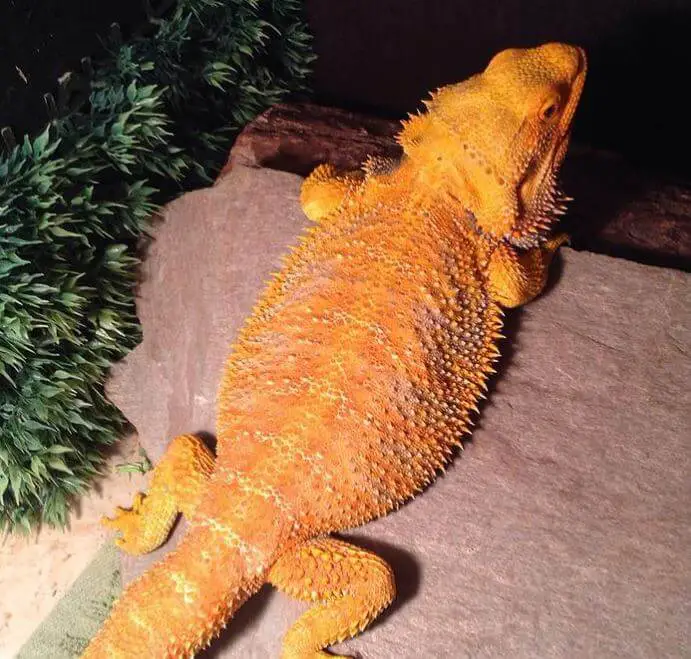
A couple of fancy dragons are carefully bred for specific characteristics like bright colors and large size. Even some have stripes.
You can imagine some examples of selectively-bred fancy dragon characteristics:
- Tiger is a fancy bearded dragon showing connected stripes.
- Red are ones bred for their bright, fiery red color.
- Citrus will be more yellow when they age.
- Orange is a typical trait that intensifies the natural orange color.
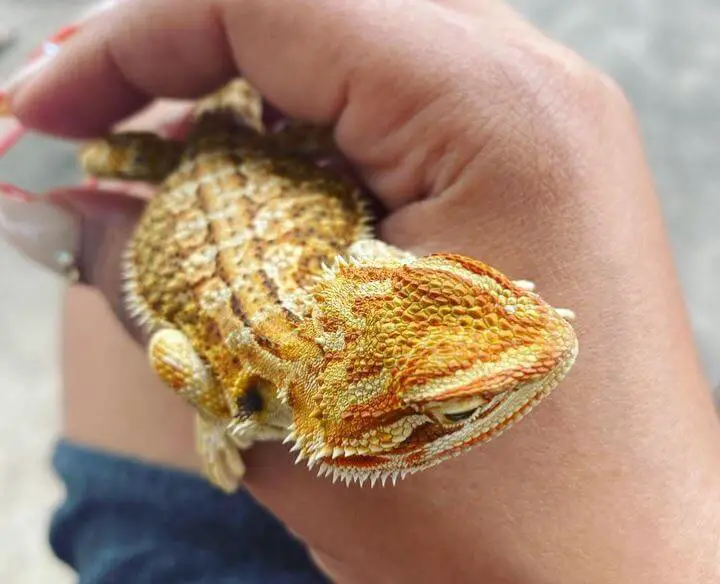
Other various bearded dragons with traits known as morphs include:
- Dunner is a genetic morph causing infrequent spikes and scales.
- Hypomelanistic is a genetic morph reducing pigmentation in black.
- Translucent is a genetic mutation causing scales to be visible.
- Leatherback is a fancy bearded dragon with a morph leading to missing spikes.
What Is a Normal Bearded Dragon?
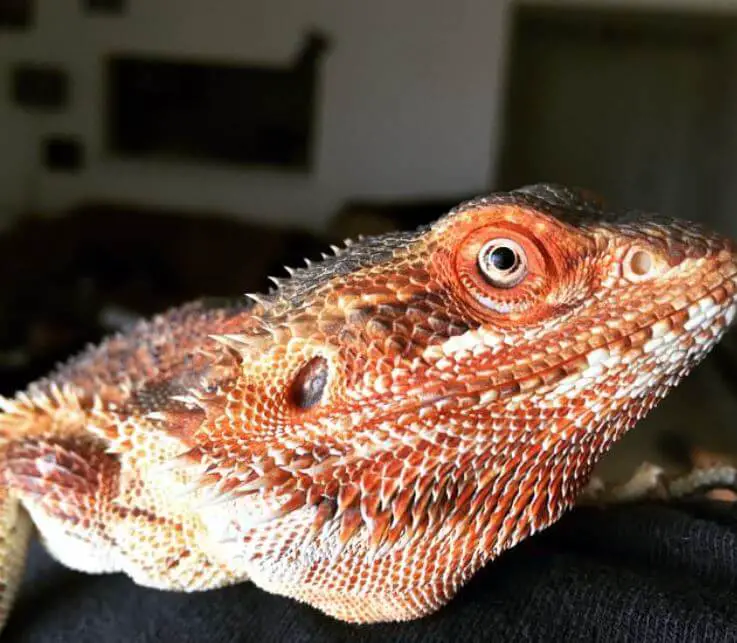
When it comes to fancy bearded dragon VS bearded dragon, it is such a missing part if we don’t mention dragons.
Bearded dragons or also called normal bearded dragons are a member of a genus called Pogona hailing from Australia.
Especially, they are typically yellow or tan.
They are regarded as bearded due to the capability of the dragon to have a beard-like skin on the throat surface, mainly when it is feeling threatened and wants to do something to protect itself.
Its body is generally flat-shaped.
There are many spines on the throat’s surface, even on both sides of the body and the head.
You can also watch this video for more exciting information:
How to Recognize a Normal Bearded Dragon?
There are around eight various species of bearded dragons. The term indicates the genus that all these are associated with.
The most typical species of domesticated dragons is probably the central bearded dragons.
The bearded dragon is also one of the most common lizards as a pet in the UK and the US.
Especially, they usually can live for around 10 and 15 years if well looked after.
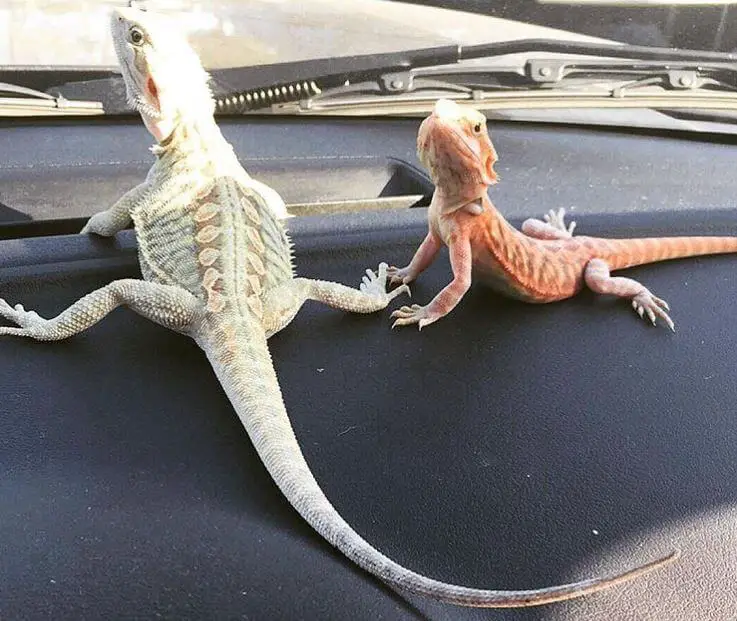
Statistically speaking, a fully-grown bearded dragon size is around 17 inches. However, a couple of males of some species can grow up to 70 centimeters.
Females grow up to 60 centimeters when they are considered bearded dragon full grown.
They are mostly regarded as omnivores, so their diet consists typically of both plants and vegetables.
Various insects, including cockroaches, crickets, earthworms, and sometimes even mealworms, are also on the menu.
What Are the Differences Between Fancy Bearded Dragon VS Bearded Dragon?
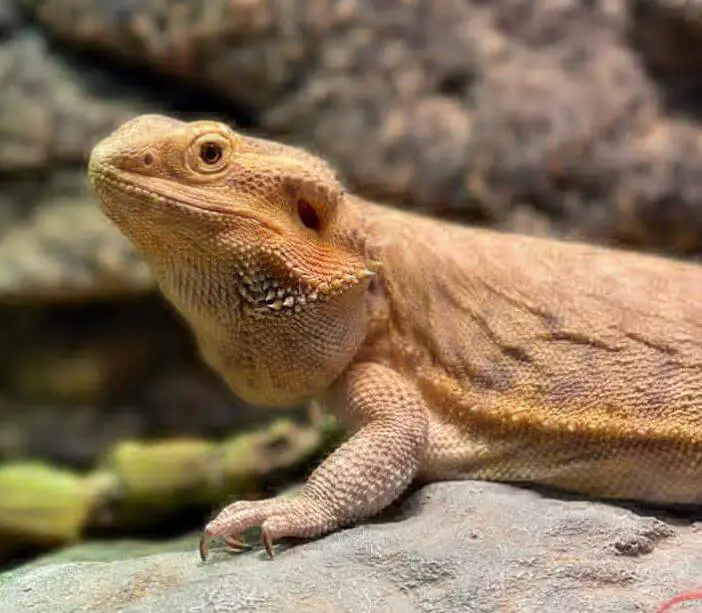
The difference between a fancy and a regular bearded dragon is related to their visible traits. Here are those differences:
1. Color
On the tank, the yellow side of the color spectrum is generally standard bearded dragons.
Fancy bearded dragons are outside of this color range and are often related to the red side.
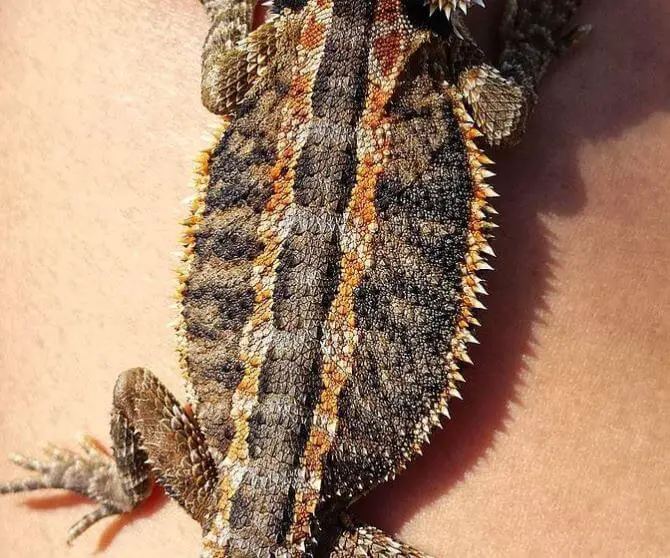
2. Scale
While the fancy bearded dragon may have smoother scales and texture along, a regular one features loads of rough scales that may be rough to feel.
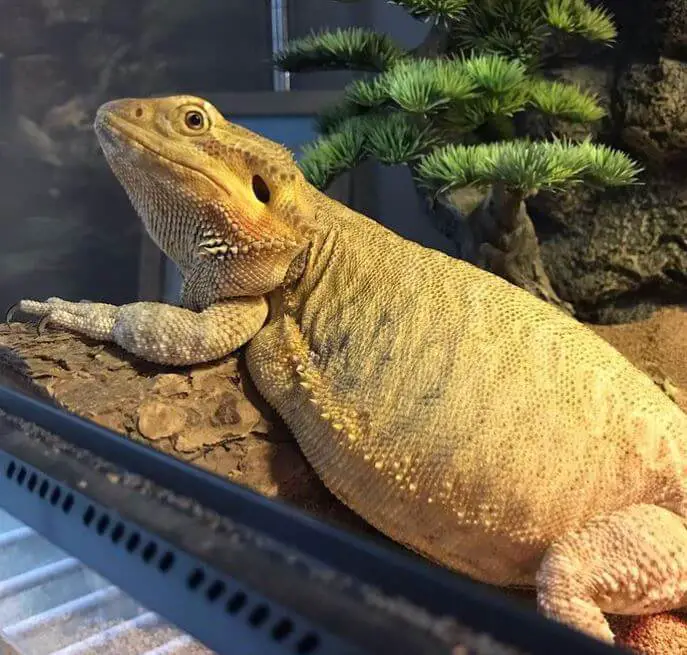
3. Price
Fancy bearded dragons are always far more expensive than normal dragons because fancy is somewhat rare and hard to make.
10 Facts About Fancy Bearded Dragons
1. Their name stems from the ‘beard’ of scales around their necks that are spiny.
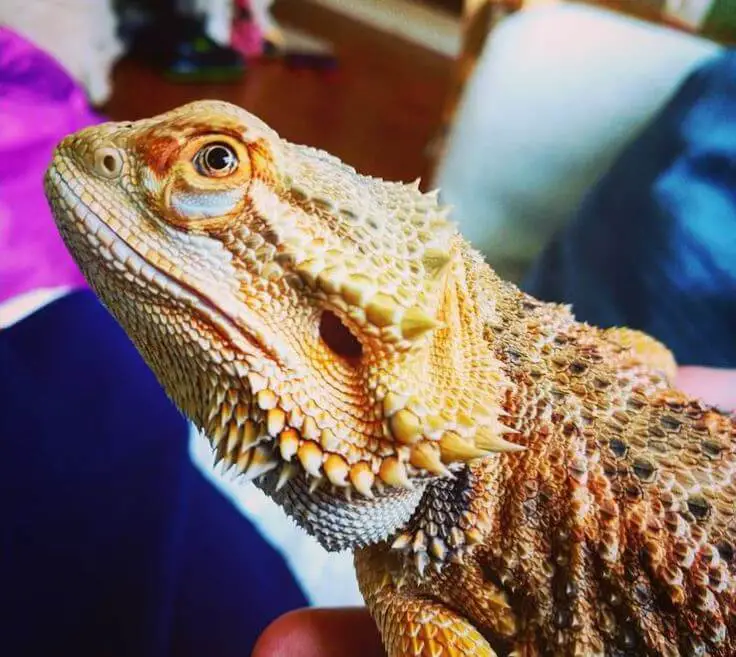
Fancy bearded dragons don’t feature beards.
However, they feature spiny scales around their necks. These scales puff out while they open their mouths as a mating display.
That also helps to protect themselves against predators.
As their scales flare out as a mating call, these spines make some change/s in color and turn black.
This allows the dragon to have the appearance of having a beard!
2. They wave at one another.
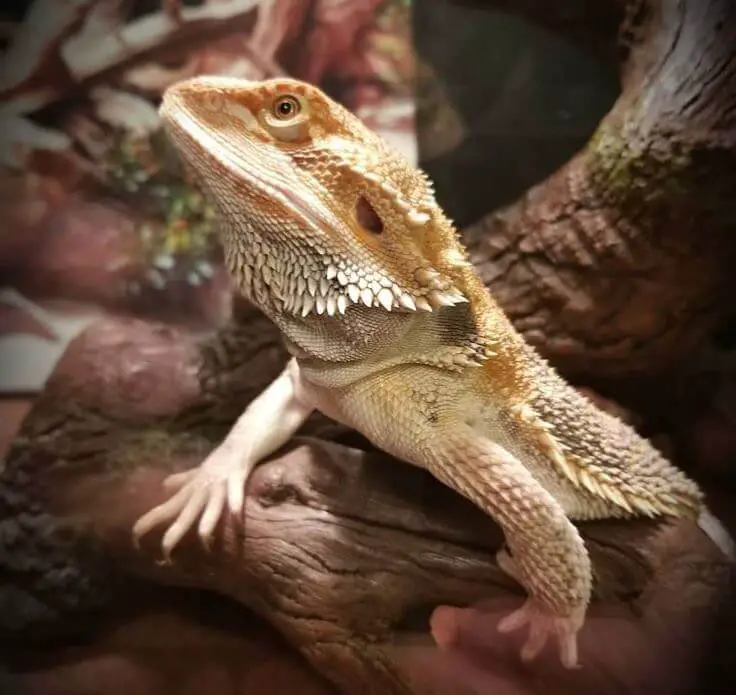
Just like human beings, they generally wave when they see someone like them.
This wave is to communicate passivity, or submission if they are in the presence of a larger, more powerful dragon.
Loads of bearded dragon owners have recently reported their dragons from time to time waving to them.
Besides, there are a host of videos online that have fortunately captured this lovely behavior.
3. They feature and also try to develop their second-to-none behaviors.
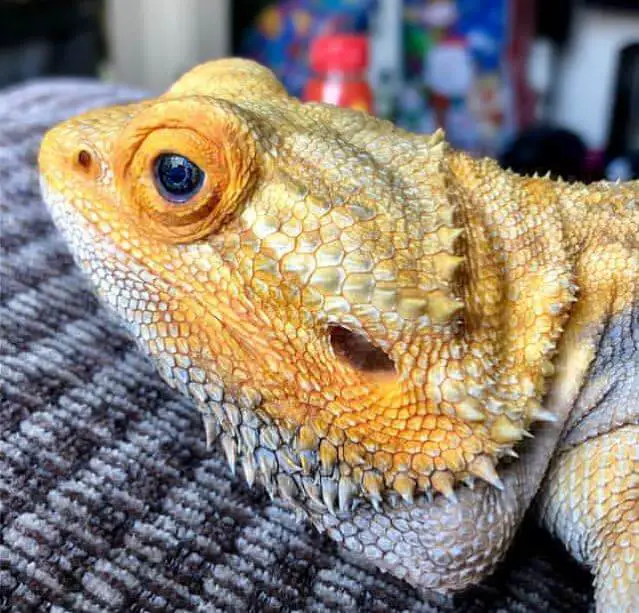
Aside from the waving, they share quite a few other behaviors that you may feel interested in.
For instance, with a quick Google search, there will be lots of pictures of beardies laid out in their vivariums.
The reason is that they are sunbathing on the beach like human beings. They are patiently waiting for someone to take photos.
The most striking movement of them, nonetheless, is the head bob.
Both males and females do this, usually in mating season when they need to do something to fulfill their soul and body’s expectation.
Moreover, the behavior will be a sign of dominance between males, trying to compete for mates or their territory.
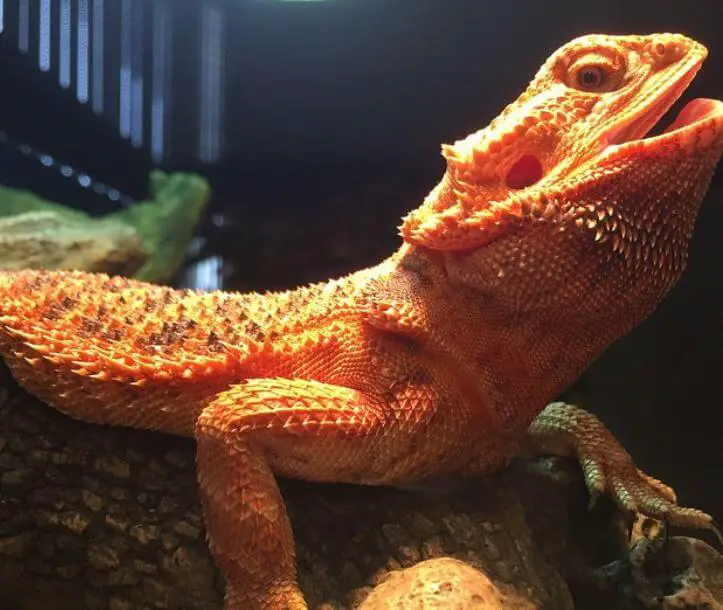
In the wild, they may lie on top of one another to display dominance. They get more UV rays from the sun.
4. They can run up to 9mph.
Beardies are, for the most part, calm and passive.
We can see them sunbathing most of the time (even though in a world of their own, it is called basking).
Nonetheless, they are unbelievably quick and can attempt to run at speeds of up to 9mph.
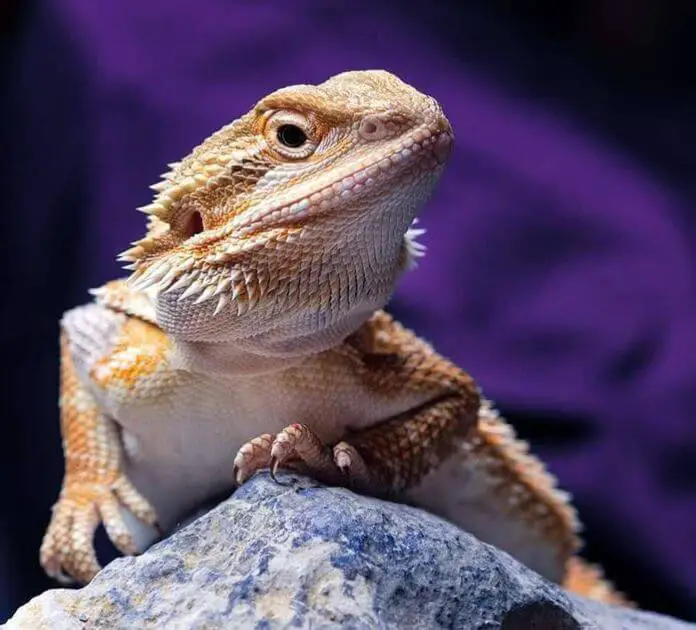
Moreover, they are one of the easiest lizards to give training lessons to walk on a leash. Hence, a walk around your local park isn’t impractical.
You’ll have to keep up in case your pet spots some food in the distance. Then they shoot off without you around.
5. They can swim.
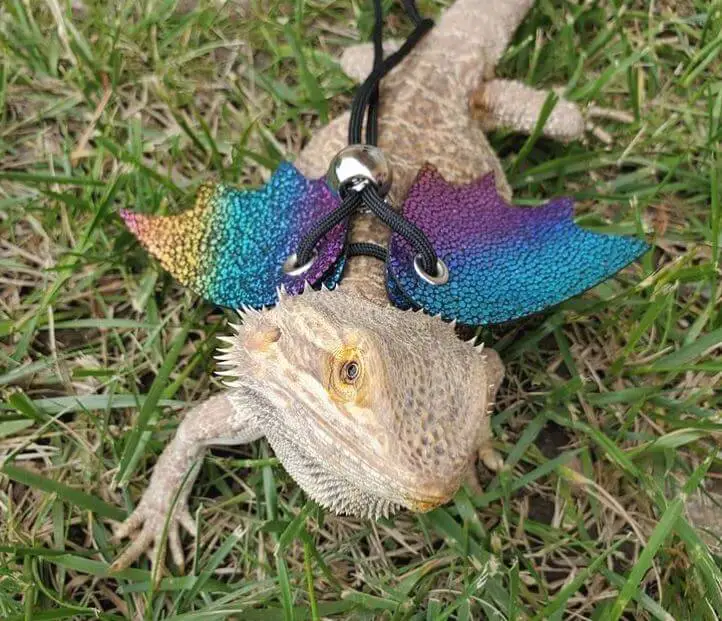
In spite of living in quite dry and arid conditions in the wild, beardies generally show their interest in the water.
Some are happy to just lie in shallow pools of water, while some bask or take a small break from the heat.
The other ones are fancy swimming, and they are happy to paddle around for a while as a small break from their daily routine.
They inflate themselves with air to aid in their buoyancy.
Besides, their swimming motion is related to that of a crocodile as well.
6. Their teeth will grow back.
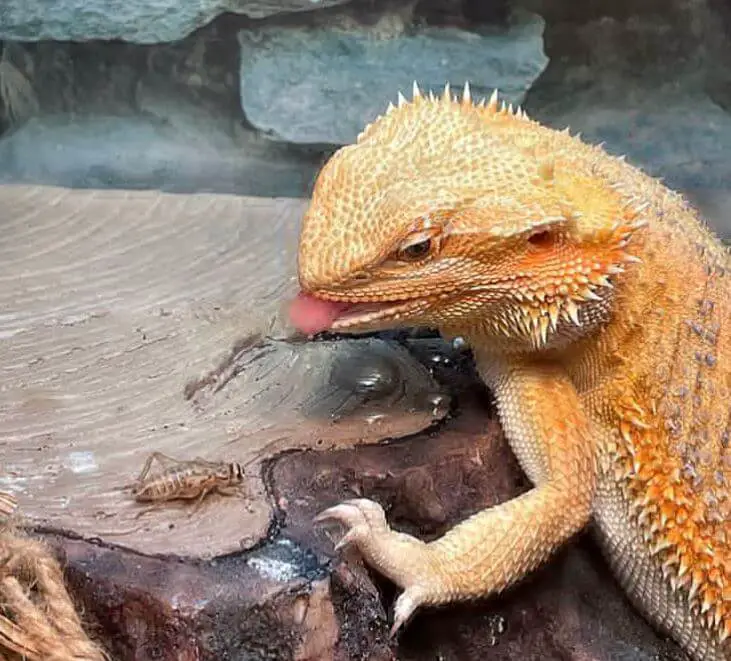
Some lizards can regrow lost tails or limbs, yet, unluckily, bearded dragons cannot.
They can, however, regrow their teeth. They sometimes lose their front teeth in the process of trying to catch prey or tear apart food.
However, these will undoubtedly regrow.
The teeth at the back and some sides are not temporary, while these front teeth may be frequently shed and regrown throughout their lives.
It is the same as how they shed their skin every time needed.
7. They can sleep easily standing up.

This one has to be visible to think that it is true.
However, the beardie dragon will occasionally sleep standing up on their hind legs.
They will usually clean against something like the vivarium’s corner or foliage within it.
But it’s absolutely a strange sight.
Additionally, you can also get hammocks for your vivarium.
They will sleep in for a more relaxing and human-looking night’s rest as well.
A fancy bearded dragon and a normal bearded dragon will do this.
8. They can run on two legs.
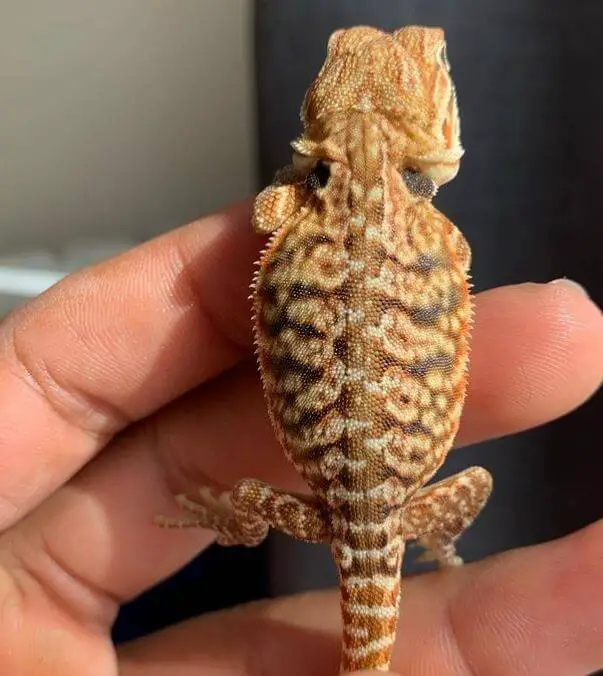
Bearded dragons can effortlessly lock their hind legs.
That is the reason why they can stand (and sleep while standing).
Yet they can move like this.
It is supposed that this happens on account of an evolutionary fault.
While running, the center of gravity will move towards the animal’s back, making it faster and more maneuverable.
Moreover, it also indicates that as they pick up enough speed.
They can’t keep their front feet on the ground and lift off, keeping running upright.
9. Their scales indicate their mood.
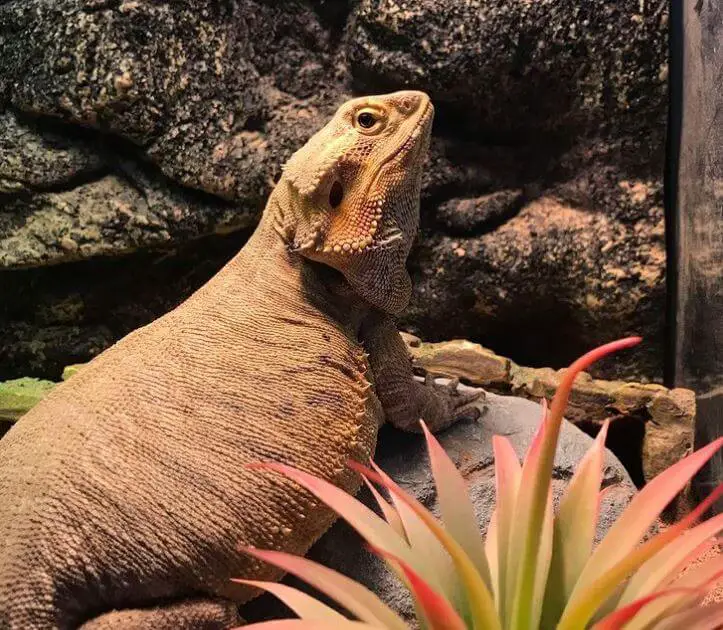
Taking body language to a whole new level, bearded dragons can show off their emotions by changing their scales with ease.
Much like their trademark puffed-out throats, scales of beardies will turn tense and spiky when they feel stressed.
Whereas, if they are somehow comfortable, their scales can sit much flatter.
And it is smoother to the touch.
Besides, their beards may also become black if they have the feeling of being stressed out or threatened. Sometimes, they are preparing to mate.
10. Their colors can change with not much effort.
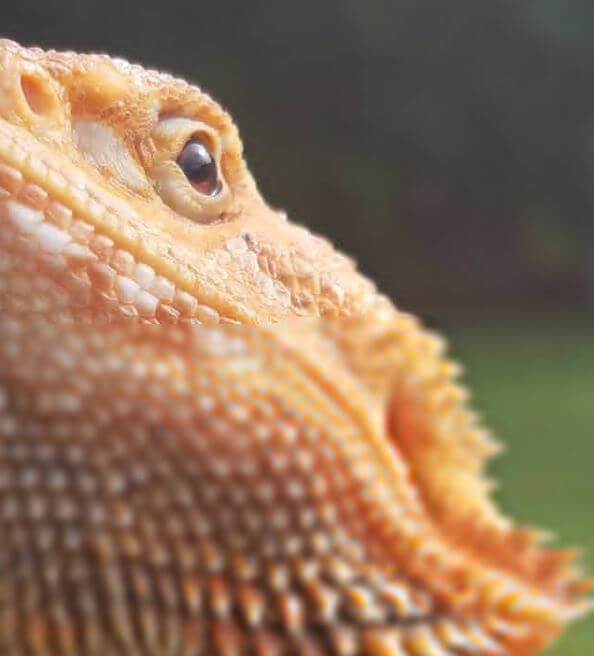
Like their ‘beards’ turning black, fancy bearded dragons can easily change the color of the rest of their skin, too.
This isn’t as clear as with a reptile-like chameleon, yet the phenomenon can still be a huge surprise for owners.
Bearded dragons, throughout their lifetime, shed their skin.
It is okay for the newly-revealed skin to be an unrelated color.
They will change in color as they adapt to different temperatures also.
Additionally, they will turn their scales darker to absorb heat better if they are cold.
Their scales will become lighter to reflect heat and deter them from overheating quickly.
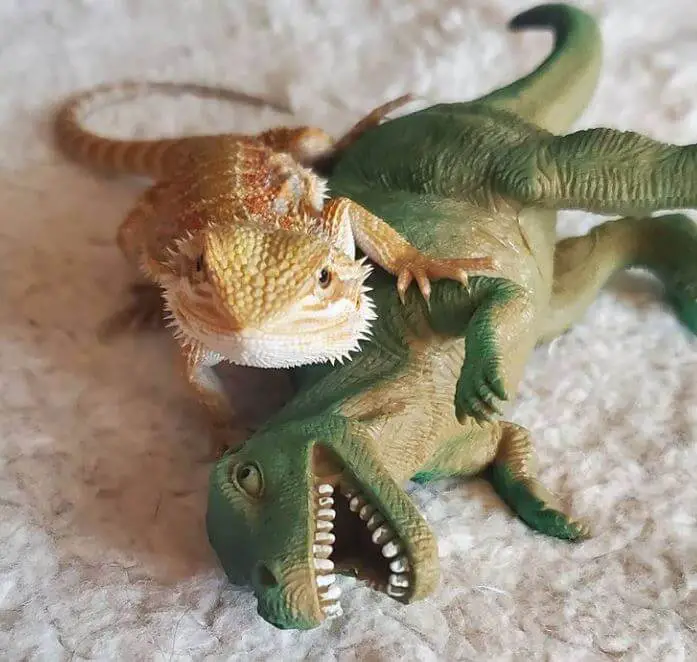
Their breed often determines their possible color change.
Hence, you might see them in various oranges, yellows, browns, and greens.
Which Is Better Between Fancy Bearded Dragon VS Bearded Dragon?
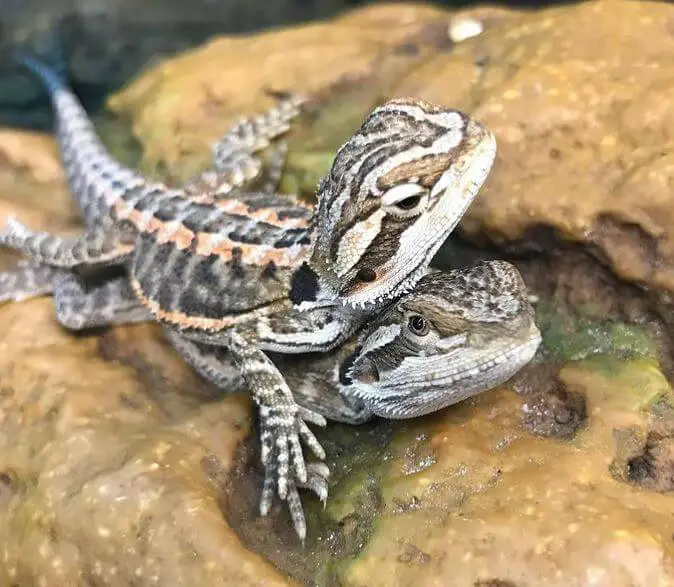
Which is better between fancy bearded dragon VS bearded dragon?
Figuring out the best pet is not a big problem to solve. However, you have to keep in mind these:
1. Lethargy
When choosing between a fancy bearded dragon VS bearded dragon, you should not choose the one that cannot open its eyes or quickly move around.
Nearly every dragon is curious. They desire to explore their environment, especially when there’s something new around them.
In addition, you in this case are the whole new thing in its space, so it will be curious. Don’t select a dragon that cannot show these signs.
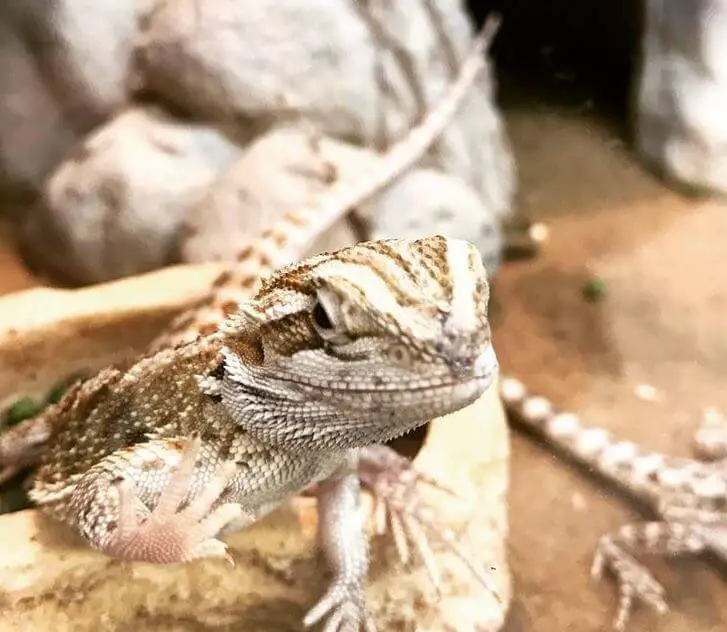
A healthy one will always be alert and curious.
You can effortlessly ask to handle a beardie.
Look at how the dragon appears, and don’t forget to take a closer look at it before deciding.
That creature may try to run away from you but don’t be stressed about this.
Especially, you are a stranger and might be a predator for all he knows, and precaution is a must here.
However, it is ideal if your bearded dragon is already very tame and gets to the presence of humans as well.
Another thing is that a bit of dragon may attempt to scare you or bite in a couple of rare cases.
2. Position of the Head
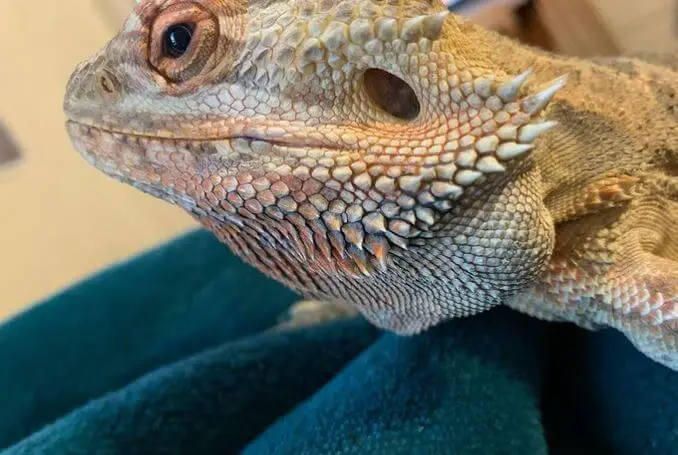
A healthy pet should get its body and head gently raised while sitting relaxed or walking around.
3. Some Other Signs of Sickness and Infection
The dragon will not normally move much or at all if it is sick.
Some also feature mucus in their eyes or nose, and mouth froth is probably a sign after getting home.
However, some other indications of disease are straightforward to see through.
For example, swollen limbs, tail kinking, and bends in the back (this may be an obvious sign of metabolic bone disease as well).
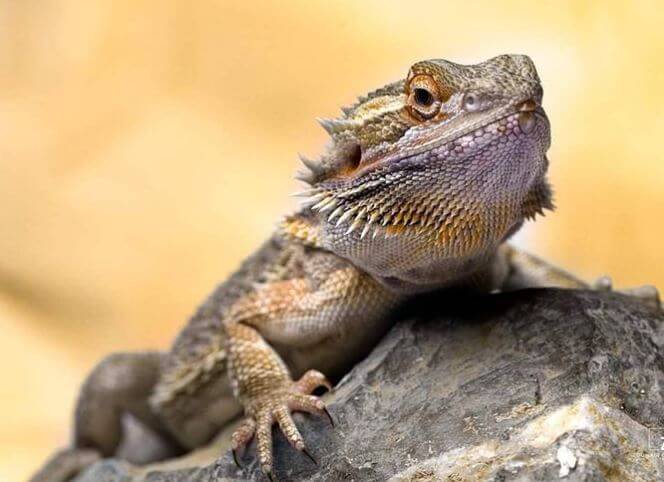
From time to time, dark patches on the tail are not related to the rest of its body (tail rot).
However, a couple of other signs of ailment could be dirty vents.
Besides, there must be no fecal spots at all, for sure.
4. Body
A healthy beardie should feature both a round plump belly and, of course, a head.
There should be no ‘dents’ or protrusions around their body.
Besides, their body should be round, without any bones sticking out adjacent to hips or back.
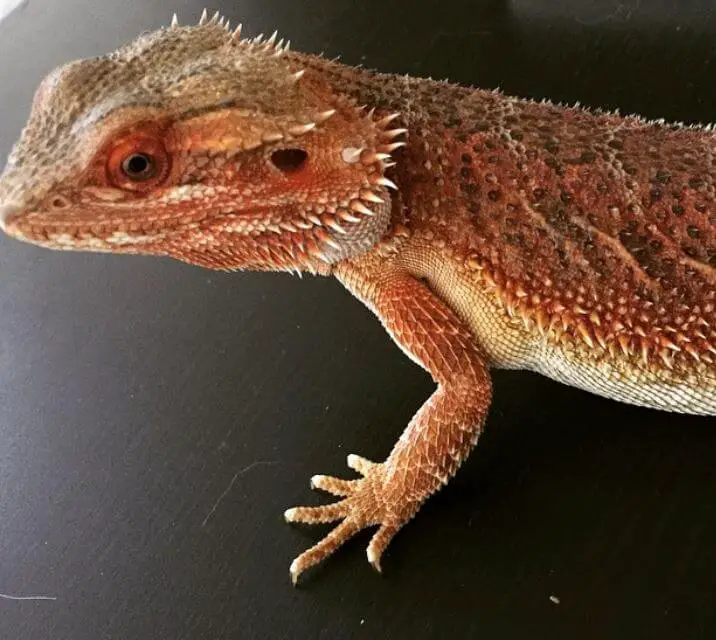
You need to make sure that the pet’s toes and tail are all present and not missing. Never choose dragons with super-thin wings.
5. Cage Maintenance
You should check the condition of the cage if your dragon has other dragons in a shared cage.
Besides, the cage needs to be clean and not very large.
All of them in the cage need to look healthy, too.
If even one of them is not in good condition, there is a high possibility that he has infected the rest.
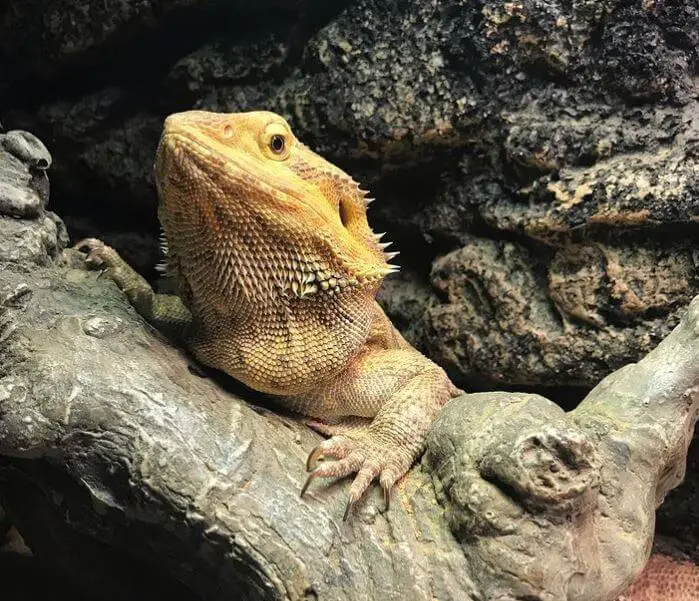
6. Choose for Long-term Keeping
A good criterion of them is amicable or docile.
Never get a dragon showing even the slightest aggression.
Besides, you should avoid them when they are feeling aggressive.
They open their mouths, puff their throat, and appear ready to attack whenever you try to touch them.
If you can do such, all types of beardies are perfect also!
Frequently Asked Questions About Fancy Bearded Dragon VS Bearded Dragon
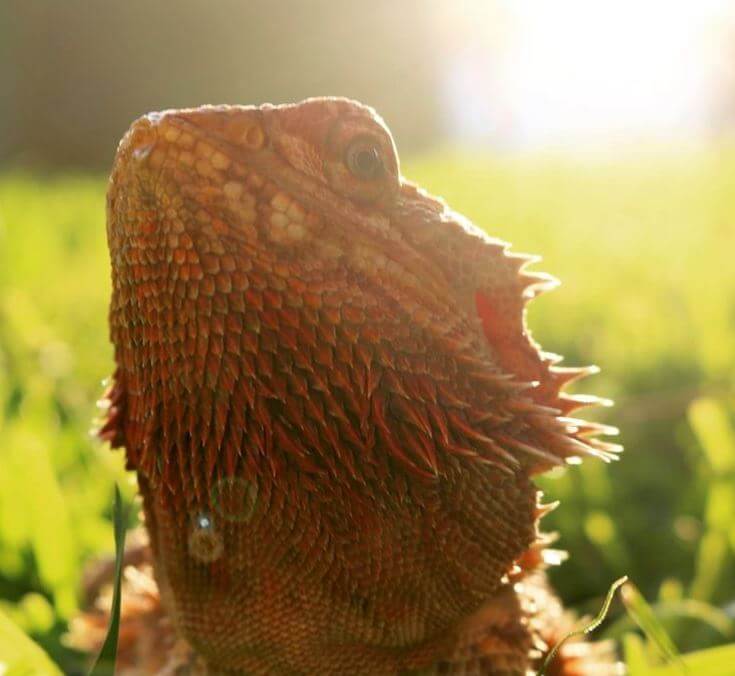
1. Why Does My Bearded Dragon Turn Black?
Maybe they want to gain traction.
They are common for the reason that they have fun behaviors, and they’re somewhat smart.
If they seek attention or explore outside the enclosure, they possibly communicate this demand by drawing attention to themselves with a darkened beard.
Hence, you may feel a bit strange, but it is true.
If other demands have been met, this indication may be the reason why their beard is black.
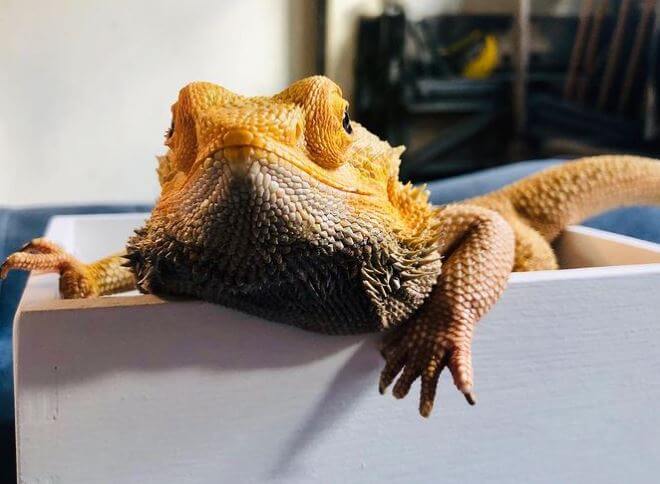
Sometimes, this shows some signs of getting ready to poop.
In some situations, they darken their beards before having to defecate.
There isn’t any apparent reason why or predicted factors as well.
Some beardies do this every time. However, some will never do this.
If the beard darkens a couple of hours before going, then they will turn back to normal.
2. What Is a Good Name for a Bearded Dragon?
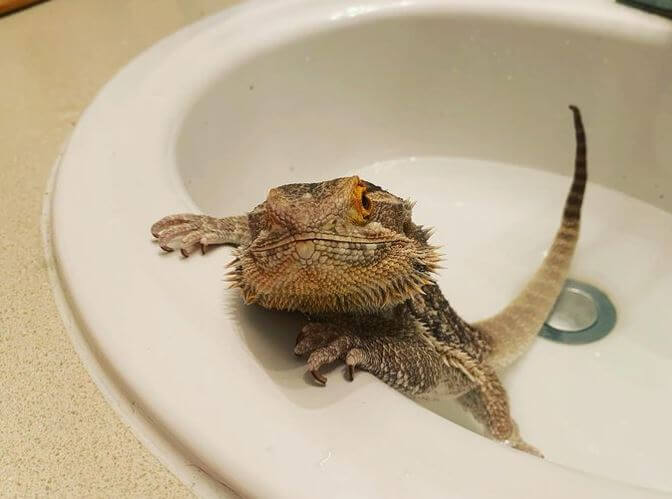
What should I name my beardie has long been a question for many customers.
Whether it is a regular beardie or a fancy beardie name. You also have to be meticulous in choosing the best. And here are some examples:
- Scarface – If your dragon features any scarring.
- Stumpy – If a part of the tail is missing due to agamids, it won’t regrow its tails.
- Pinocchio – This will be ideal for a lizard with a longer snout than normal.
- Waddles – This is for an overweight dragon.
- Tripod – This name would be fantastic if he is missing a leg.
- Fork – If his tongue is pronounced.
- Bugsy – In case he has buggy eyes.
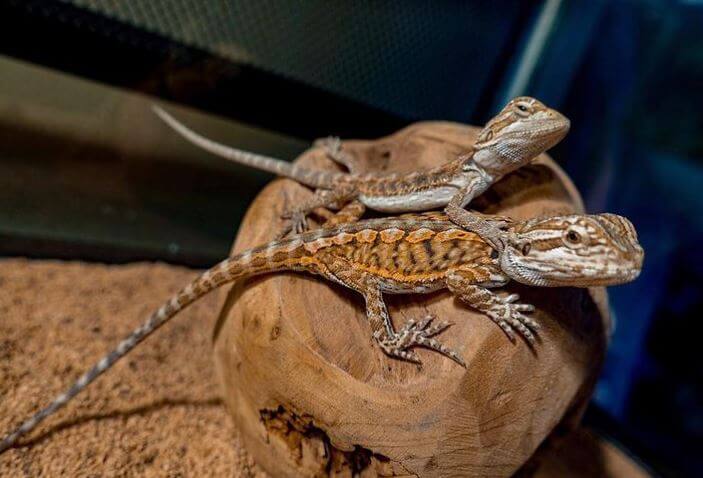
Conclusion
Choosing between a fancy bearded dragon VS bearded dragon may be daunting to you to some extent in the case that this is the very first time you get to know them.
If they remain their inherent features for pet keepers who love nature, then they will be ideal for ones who lean towards specific traits like bright and vivid colors or unique patterns.
Which one is better? It all depends on your preferences because these will live around you for such a long time!
Key points for bearded dragons vs fancy bearded dragons:
Bearded dragons, with their unique appearance and captivating personalities, have become popular pets among reptile enthusiasts. While the term “fancy bearded dragon” may sound intriguing, it’s essential to understand the differences between fancy and standard bearded dragons. Here’s a breakdown of these distinctions:
1. Coloration and Appearance:
- Fancy Bearded Dragons:
- Fancier bearded dragons typically exhibit more vibrant and unusual color patterns and combinations.
- They often have striking colors, including reds, oranges, yellows, and unique morphs.
- Standard Bearded Dragons:
- Standard bearded dragons have the typical coloration found in the wild, with earthy tones like browns and grays.
- While still attractive, they lack the bold and diverse color variations of fancy dragons.
2. Morphs and Genetics:
- Fancy Bearded Dragons:
- Fancier dragons often belong to specific morphs or genetic lines known for their distinct appearances.
- Breeders selectively pair dragons to create desired color and pattern variations.
- Standard Bearded Dragons:
- Standard bearded dragons are usually less influenced by selective breeding, maintaining their natural appearance.
3. Price and Availability:
- Fancy Bearded Dragons:
- Fancy dragons tend to be more expensive due to their unique and sought-after color patterns.
- Availability can vary, and some morphs may be limited or rare.
- Standard Bearded Dragons:
- Standard dragons are generally more readily available and affordable, making them a common choice for reptile enthusiasts.
4. Personality and Behavior:
- Fancy Bearded Dragons:
- The personality and behavior of fancy and standard dragons are generally similar.
- Both can be docile, friendly, and social, making them suitable pets for handling.
- Standard Bearded Dragons:
- Standard dragons are also known for their amiable nature, making them ideal for reptile keepers of all experience levels.
5. Feeding and Care:
- Fancy Bearded Dragons:
- The care requirements for fancy dragons are consistent with those of standard dragons.
- Both need a balanced diet of insects and greens, appropriate lighting, and a suitable habitat.
- Standard Bearded Dragons:
- Standard dragons thrive with proper care and attention to their health, as do fancy dragons.
6. Breeding and Genetics:
- Fancy Bearded Dragons:
- Breeders of fancy dragons focus on specific genetic traits to produce unique color combinations.
- This often involves more extensive knowledge of bearded dragon genetics.
- Standard Bearded Dragons:
- Standard dragons may be bred with a focus on health and genetic diversity rather than specific color traits.
7. Aesthetic Preferences:
- Fancy Bearded Dragons:
- Fancy dragons are an ideal choice for individuals who appreciate the artistry of reptile color morphs and enjoy the novelty of unique patterns.
- Standard Bearded Dragons:
- Standard dragons are well-suited for those who appreciate the natural beauty of these reptiles without the focus on complex coloration.
In summary, the primary difference between fancy and standard bearded dragons lies in their coloration and appearance. While fancier dragons boast unique and vibrant color patterns, standard dragons maintain the natural earthy tones seen in the wild. Both types share similar behavior, care requirements, and charming personalities, making them beloved reptile pets for enthusiasts with varying aesthetic preferences and budgets.
Further Reading:
- Carolina Custom Cages Terrarium Review
- 8 Best Basking Rocks for Beardie: What Is the Best Choice?
- 10 Best Thermometers for Beardie: How to Choose the Best One?
- 5 Best Beardie Lighting Setups for Beardie Lovers
- 9 Best Heat Lamps for Beardie: Natural Habitat Provided

